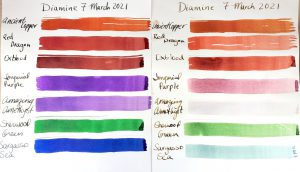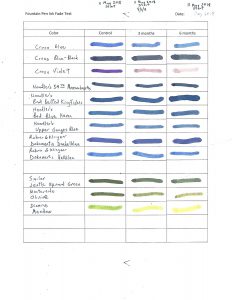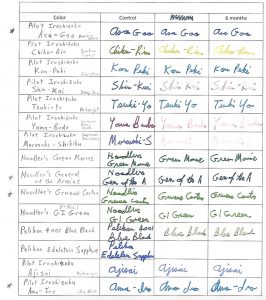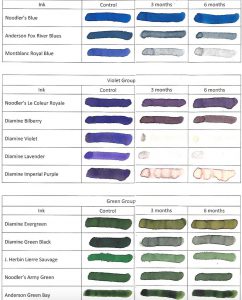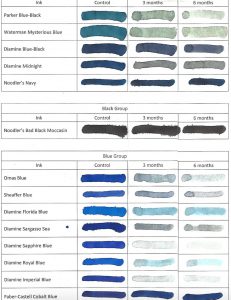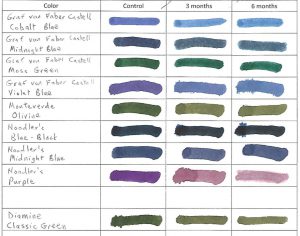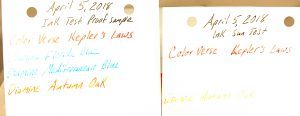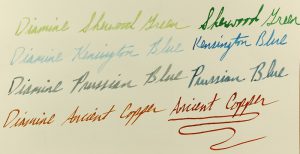People often ask what my favorite ink brand is, and, more-and-more it is Diamine. Just like the Beatles, Diamine is based out of Liverpool in the United Kingdom. However, they beat the Beatles to the scene by 100 years in 1864.
In all of my experience with the ink, so far, it has been very fountain pen friendly. I’ve had great success with it in modern and vintage pens, plus, it has a zillion different colors for sale. The only things I don’t mess with are their shimmer inks because shimmer inks clog the daylights out of pens.
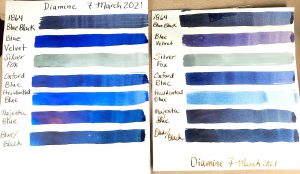
Diamine blue inks generally hold up pretty well to the sun’s harsh rays. It is a rare feat among blue inks.
When I stumbled into 14 different ink bottles from a collection I knew it was time to do one of our famous inkfast tests and pH tests.
The results are interesting. Although they lose a bit of their luster, most of the blues are pretty tough and don’t let the sun and UV light bully them. Silver Fox barely fades at all. When still fresh looking, three of my favorite blues in production are Diamine’s “Majestic Blue,” “Blue/Black” and “Blue Velvet.” The only blue to really fade much was “Presidential Blue.”
Breaking into some of the more colorful Diamine inks, the sun proves more aggressive. “Ancient Copper” holds up amazingly well, but “Red Dragon” takes a hit. “Amazing Amethyst” really takes it hard and almost completely fades out. The very popular “Oxblood” fairs well, but it still fades a bit.
The pH testing surprised us. As a quick reminder, in the world of pH testing a 0 is extremely acidic, 7 is neutral and 14 is extremely alkali or base. We calibrated the testing device and tested the inks at 24ºC.
Diamine Ink Name pH Test Result
Ancient Copper 6.7
Red Dragon 2.5
Oxblood 2.5
Amazing Amethyst 6.1
Sherwood Green 4.4
Blue/Black 4.1
Oxford Blue 3.8
Presidential Blue 3.2
Majestic Blue 4.2
1864 Blue/Black 4.5
Silver Fox 4.0
Before you throw out any ink you might love, please keep in mind that the pH is only a data point. We don’t know what chemicals are in each ink, and we don’t know how their chemical properties will react to your ink sacs or converters. We’ve seen acidic inks used safely in ink sacs for years and neutral inks destroy ink sacs in a matter of months.
That said, we’ve always had great success with Ancient Copper, which is one of our personal favorite ink colors.
We hope this information is interesting to you…and maybe even help you.


 Shopping Cart
Shopping Cart




